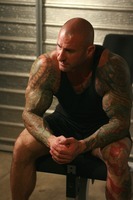Resting Results

Get the facts on how resting can help you out with progressing to your goal
When
most bodybuilders get into a diet phase they typically increase their reps to
help burn more calories.
Doing sets in the 15-20 rep range is not uncommon. It
makes sense, after all – more reps equals more movement. And that should burn
more calories. Right? Not necessarily so. New research from researchers at the
College of New Jersey has discovered that rest periods between sets has more
effect on calories burned during a weight workout than the number of reps. To
test the role that reps played on calorie burn, the scientists had 8 males
perform 5 sets of bench presses completing 5 or 10 reps. To test the role that
rest periods between sets played, they had them complete each workout using 30
seconds of rest between sets or 3 minutes of rest between sets. The number of
calories burned was calculated by having the subjects connected to a metabolic
cart during the workout and for 30 minutes after.
Calories Burned No Matter What
The
scientists discovered that regardless of the number of reps performed, the
lifters burned more than 50% greater calories when they rested just 30 seconds
between sets as compared to 3 minutes. Doing ten reps per set only burned
about 7% more calories during the workout as compared to doing 5 reps per set.
However, this was negligible because when they did 5 reps per set they burned
6% more calories during the 30 minutes after the workout as compared to when
they did 10 reps per set.
So if
getting lean is top priority for you, you don’t have to give up your strength. After
all, training heavy burns more calories after the workout. And research shows
that this greater calorie burn can last up to two days! So you can still train
heavy and burn more calories in the gym. Just keep your rest periods down below
1 minute. Yes, this little rest will effect your strength somewhat on
successive sets, but it’s better than giving up all your strength by sticking
with 20 rep sets.
Reference:
Falvo,
et al. National Strength and Conditioning Associations Annual Meeting, Las Vegas,
2005.






